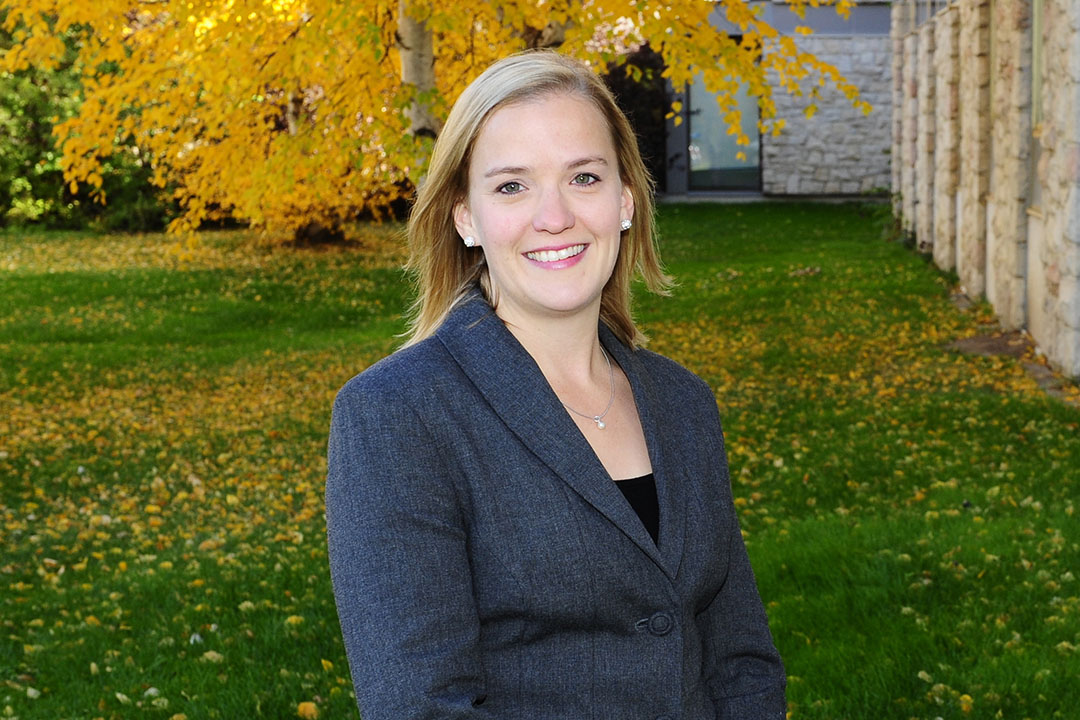
USask researcher to explore impact of meditation on migraine headaches
A University of Saskatchewan (USask) researcher will explore whether meditation can help treat migraine headaches after receiving funding from the Saskatchewan Health Research Foundation (SHRF) last month.
By Shannon BoklaschukOn March 3, Dr. Marla Mickleborough (PhD), from the Department of Psychology in USask’s College of Arts and Science, was announced as one of 13 researchers awarded a 2019-20 Collaborative Innovation Development Grant. Mickleborough will receive $50,000 for one year for her project titled “Impact of Neurofeedback-based Meditation on Migraine Chronification.”
“I was really surprised and excited when I opened the email from SHRF and saw that we’d been funded. Our college (plan) motto is ‘Think Big, Be Bold,’ and this is a ‘Be Bold’ project for me that represents taking my research further into knowledge translation than what I've been able to do in the past,” said Mickleborough.
“I’ve got two students working on the project: Gloria Sun, an undergraduate student in my lab who did much of the writing for this grant, and Faly Golshan, a PhD student in my lab. I am collaborating with two psychologists, Megan O’Connell and Jorden Cummings, as well as two neurologists, Paul Masiowski and Haley Block.”
The main objective of Mickleborough’s project is to explore whether in-home neurofeedback-based mindfulness meditation can work as a preventative treatment for people with migraine headaches.
In particular, Mickleborough wants to see if meditation will reduce the frequency of migraine headache attacks, medication use, and symptoms of anxiety and depression—all factors that can lead someone with episodic migraine headaches to become a chronic migraineur.
“People with chronic migraine have 15 or more headaches a month and this leads to a substantial disability,” said Mickleborough. “The hypothesis we are testing is whether people who practice a neurofeedback meditation at home regularly can decrease those risk factors for becoming a chronic migraineur.”
Mickleborough’s lab collects brainwaves (EEG) using a commercially available headband called the MUSE. Although the headband is used in her lab for research purposes, it is also sold commercially for a few hundred dollars to teach people mindfulness meditation at home.
“It uses your brainwaves to prompt audio feedback so you may hear, for example, light rain and birds singing when your brainwaves are calm and a busy rain sound when your brain activity reflects you are distracted,” she said.
Eight per cent of people in Saskatchewan experience migraine headaches, and about eight per cent of migraineurs suffer from chronic migraine, said Mickleborough. She describes migraine headaches as “a significant health issue for people in Saskatchewan, and the cause of a great deal of lost productivity.”
“One of my goals is to aim for knowledge translation in my research. I want to make sure that the research I am doing has a direct benefit to either migraineurs or their physicians,” said Mickleborough.
“In the case of this research, if we find this is an effective migraine preventative treatment, it is something that is safe and inexpensive compared to some migraine preventative medications.”

